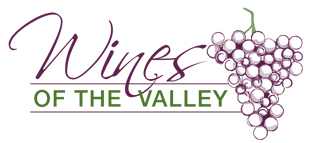Making sparkling wine in January
By KARL KLOOSTER
Of Oregon Wine Press
When you're making sparkling wine by the classic French technique called "methode champenoise," the bottle serves a dual purpose. What that simple observation, however, there follows a complex winemaking art.
Argyle Winery of Dundee is Oregon's largest sparkling wine producer. Sparkling wine represents about one-half of Argyle’s annual production of 60,000-plus cases, with the balance in pinot noir, chardonnay and other varietals.
Argyle owner/winemaker Rollin Soles spoke with Oregon Wine Press in January 2006 about the production of sparking wine – a winter month when area pinot noir winemakers have their product aging in barrels. (In 2013, Soles relinquished his winemaker title to focus on other areas of his wine business).
Making sure things are kept under control is a key component of January activities. At the time, Soles was surveying hundreds of bottles of brut.
Their driest and most popular sparkling wine was about to be "disgorged" so the "dosage" could be applied. Disgorging is a key step in the champagne-making process.
The sparkle is put into wine through secondary fermentation in the bottle. It traps the carbon dioxide gas produced as part of the process. When fermentation is complete, however, sediment and yeast cells have to be removed.
The sediment is collected in the neck of the bottle through a technique called "riddling," whereby the bottle is slowly spiraled downward onto its neck, a quarter-turn at a time, until it is standing fully upside down. By then, all the sediment should be resting on the bottom of the cork.
This process used to be done entirely by hand. Today, robot-like machines do the job.
Successfully removing the sediment, adding just the right dosage of supplementary sugar and recorking the bottle properly is tricky business. It requires several almost-simultaneous actions:
1) The neck of the bottle is thrust into an icy brine. 2) the temporary cap is removed. 3) A small amount of sugary syrup is added. 4) A permanent cork is put into place.
The question of how much syrup to add, and how sweet to make it, varies with each year, each blend and each style. As Soles said, "It's a judgment call, and it's slightly different almost every time."
Such calls are an integral part of winemaking for both still and sparkling wine. It really is as much art as science. Soles ought to know – he’s been artistically practicing the science - or vice versa - since the the early 1980s.
After graduating from UC Davis in 1980, he worked at the venerable Wente Bros. in California's Livermore Valley and Chateau Montelena, a premium Napa Valley producer.
France's Beaujolais region was his next stop. Then it was on to South Australia and the prestigious Petaluma Ltd. There, he formed a close relationship with the company's founder, Brian Croser. When Soles returned stateside in 1987, he knew the Yamhill Valley was where he wanted to start his own winery. He persuaded Croser to provide the initial financing.
In 1990, a group of investors led by Dick Erath's former partner, Cal Knudsen, also became involved in Argyle. With this backing, Soles had the flexibility to carry out his plans on a sizable scale.
His passion for sparkling wine led him to plant pinot noir and chardonnay - the primary grapes used in champagne.
"It's very labor-intensive," he acknowledged. "But this region is an ideal place to grow the varieties best suited for great sparkling wine. I believe we've already shown that we can make it as well as anywhere in the world."
That January day, Soles talked about the all aspects of his production.
"In the vineyard, we're selectively pruning now. The objective is to bring balance to the plant. We're also preparing cuttings for our nursery business."
In the winery, several things were going on at once:
1) White wine juice from previous year’s harvest was being held in insulated tanks, a practice unique to Argyle in this region. 2) The winery was growing its own yeast cultures and inoculating the juice to start the fermentation process. 3) The 2004 pinot noir was coming out of barrel for bottling while the 2005 pinot noir was going into barrels for secondary or malo-lactic fermentation. 5) Wines already in barrel were being monitored for progress. 6) 2001 brut was undergoing riddling. 7) 1996 extended tirage brut was being prepared for disgorging.
Winemaking, clearly, is for multi-tasking activity.
Related Content
-
Read more...
5: Specialty Wines
Pinot Noir draws the most attention among Yamhill Valley wines, but wine-lovers can find a diverse local ...
-
Read more...
Techniques to produce 'Bubbly'
Oregon has a climate ideally suited for sparkling wine production, especially for the classic Champagne





